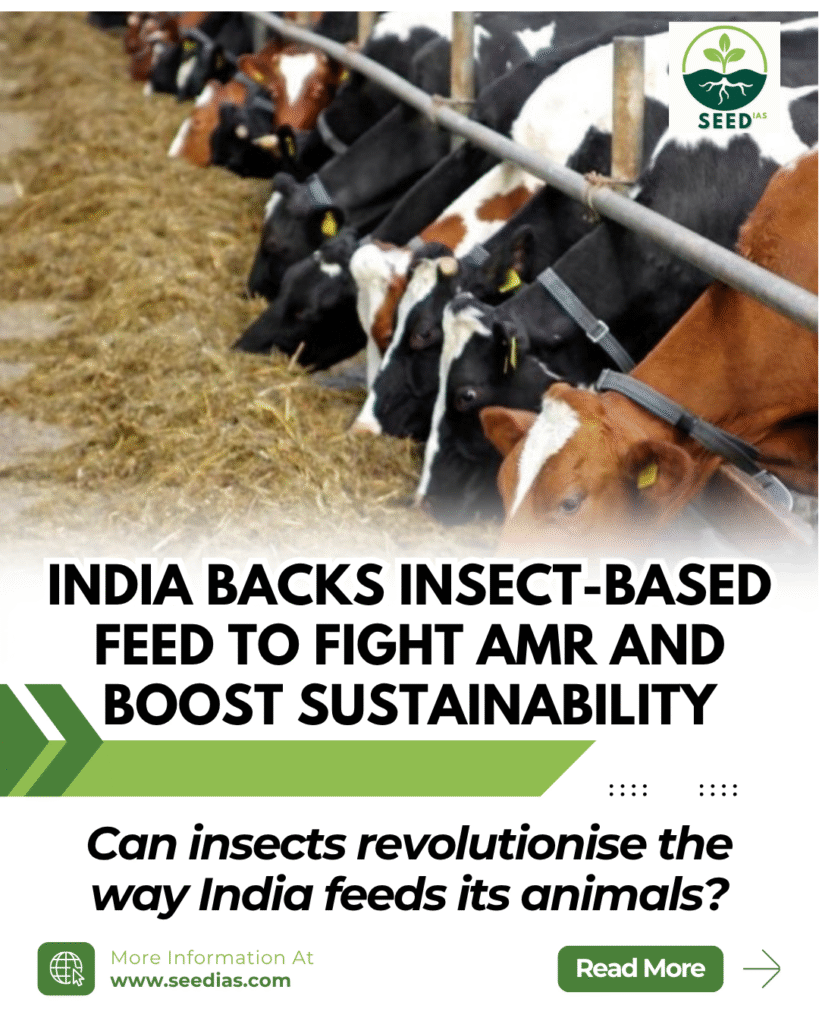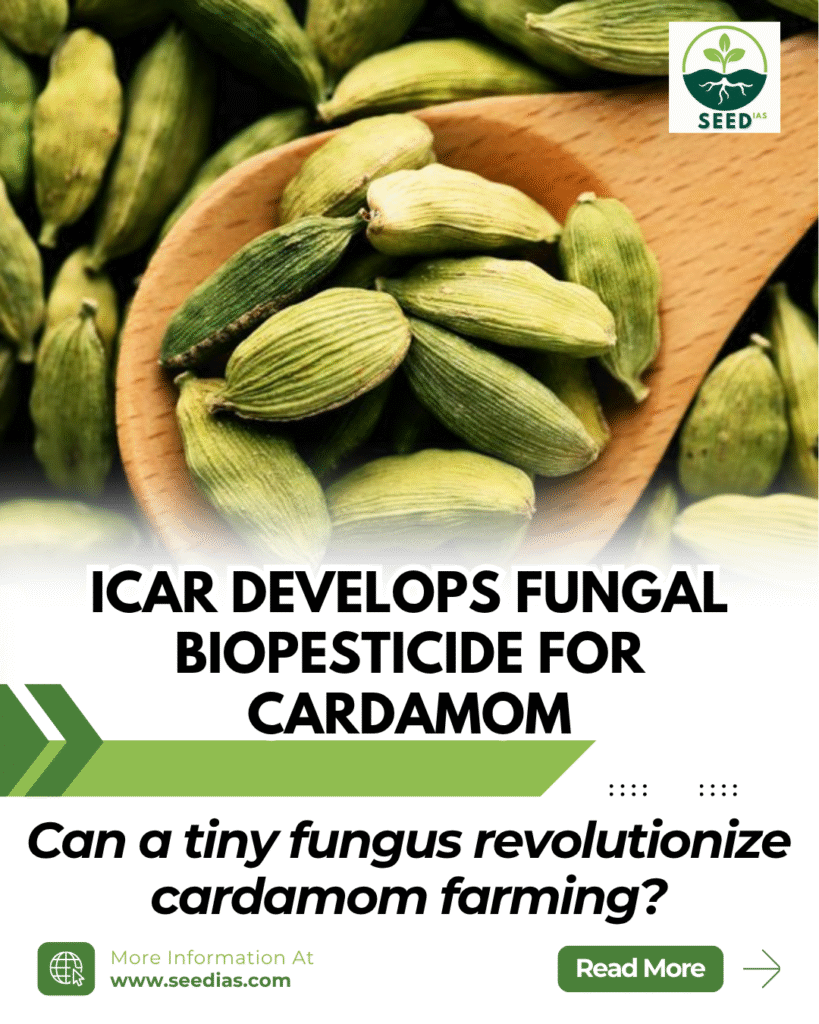Why in NEWS
India is encouraging the use of insect-based feed in livestock and aquaculture to promote sustainability, improve animal gut health, and combat the growing threat of antimicrobial resistance (AMR). The initiative is spearheaded by ICAR in partnership with key research institutions.
Key Concepts & Definitions
| Term | Explanation |
|---|---|
| Insect-Based Feed | Protein-rich feed made from insects like black soldier flies, crickets |
| Black Soldier Fly (BSF) | Insect that converts food/agro waste into high-protein biomass |
| Frass | Leftover insect waste used as organic fertiliser |
| AMR | Antimicrobial Resistance—when microbes become resistant to treatment |
| Circular Economy | A zero-waste production model using recycled inputs |
What is Insect-Based Feed?
| Feature | Details |
|---|---|
| Source Insects | Black soldier flies, mealworms, crickets, Jamaican field crickets |
| Working Mechanism | Insects convert agro/food waste into protein biomass within 12–15 days |
| Protein Content | Up to 75% protein, rich in essential nutrients like zinc, iron, calcium |
| Additional Benefits | Enhances gut health, reducing the need for antibiotics in animals |
| By-product Utility | Frass is used as fertiliser, enabling sustainable, closed-loop farming |
Significance of Insect-Based Feed
| Area | Importance |
|---|---|
| Nutritional Value | High protein, essential fats, minerals; better digestibility than soy/fishmeal |
| Cost & Scalability | Lower land, water, and input requirements; suitable for mass adoption |
| Food Security | Supports rising demand for meat; aligns with FAO projections (2050) |
| AMR Reduction | Gut health benefits reduce antibiotic use, limiting AMR risk |
| Environmental Sustainability | Low GHG emissions, land conservation, climate-friendly alternative |
| Circular Economy | Organic waste converted into feed and fertiliser with zero waste |
India’s Push and Global Trends
| Country Scope | Status |
|---|---|
| Global | 40+ countries have approved insect-based feed for poultry, livestock, fish |
| India | Pilots by ICAR, CIBA, CMFRI; startups like Loopworm, Ultra Nutri active |
| Target Animals | Shrimp, seabass, poultry, and cattle |
What is Antimicrobial Resistance (AMR)?
| Feature | Details |
|---|---|
| Definition | Microorganisms no longer respond to antibiotics or other antimicrobial drugs |
| Global Impact | Caused 1.27 million deaths and contributed to 4.95 million in 2019 alone |
| Economic Cost | Could cause USD 1–3.4 trillion GDP loss by 2030 and USD 1 trillion healthcare cost by 2050 |
| India’s Situation | Growing resistance seen in E. coli, Klebsiella pneumoniae, Acinetobacter baumannii |
In a nutshell
Memory Code: “FEED: Fight Emissions, Enhance Efficiency, Defeat Drug Resistance”
- Fight emissions through sustainable feed
- Enhance animal health and digestion
- Efficient conversion of waste to protein
- Defeat AMR with reduced antibiotic usage
Prelims Practice Questions
- Which of the following insects is commonly used for insect-based livestock feed?
A. Honeybee
B. Silkworm
C. Black soldier fly
D. Dragonfly - What is the key advantage of insect-based feed in the context of antimicrobial resistance?
A. Enhances animal muscle mass
B. Increases antibiotic absorption
C. Improves gut health, reducing antibiotic use
D. Promotes faster reproduction in livestock - What is ‘frass’ in the context of insect farming?
A. Processed insect feed
B. Wastewater from aquaculture
C. Insect by-product used as fertiliser
D. A disease caused by flies in livestock
Mains Practice Questions
- Discuss how insect-based livestock feed can contribute to sustainable agriculture and fight antimicrobial resistance in India. (10 marks)
- Examine the challenges and prospects of scaling up insect-based feed as part of India’s climate-smart agricultural practices. (15 marks)
Prelims Answers Table
| Q No. | Answer | Explanation |
|---|---|---|
| 1 | C | Black soldier fly is a key insect used to produce protein-rich feed |
| 2 | C | Gut-health benefits reduce the need for antibiotics, helping fight AMR |
| 3 | C | Frass is the leftover insect waste used as organic fertiliser |
















